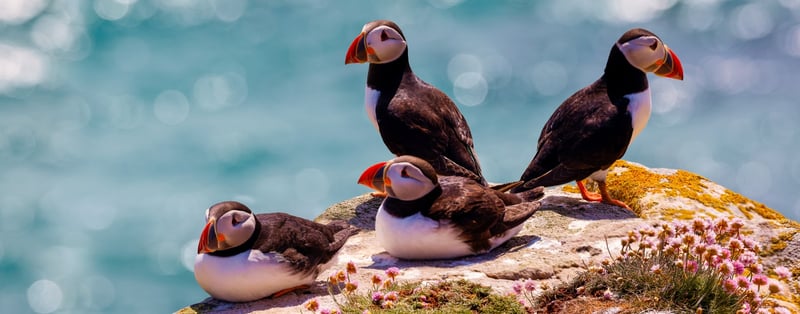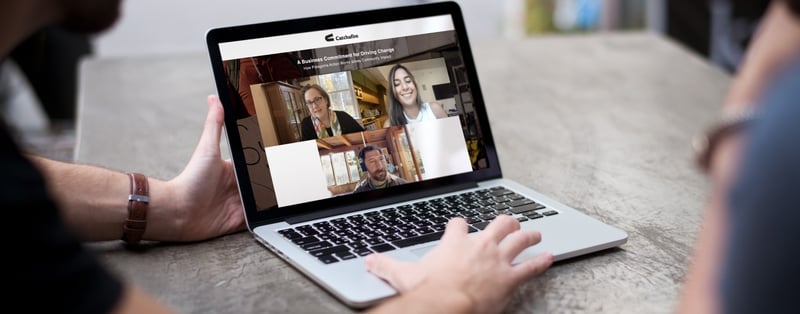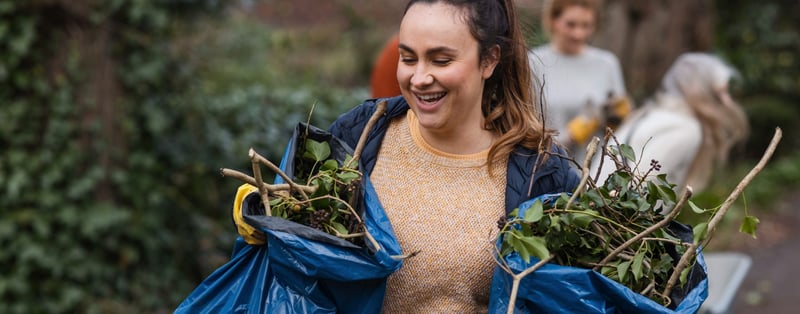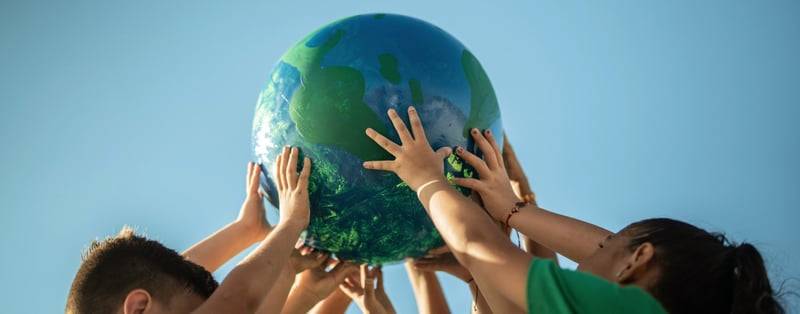Community impact with Patagonia Action Works
 Gohar Chichian
·
6 minute read
Gohar Chichian
·
6 minute read

For almost 40 years, Patagonia has supported grassroots activists working to find solutions to the environmental crises. Patagonia’s Action Works program connects individuals and environmental organizations driving impact in their communities.
Since 2017, Patagonia has partnered with Catchafire as a part of Patagonia Action Works to provide grassroots activists and organizations with the capacity building resources and support they need. Through this partnership, organizations receive access to skilled volunteers around the world, providing project support and maximizing the impact organizations can make on the communities they serve. Many grantees report that they found ongoing support from someone they met through Catchafire. Whether that person becomes an off-platform volunteer or board member, there are meaningful connections made and continued collaboration between grantees and volunteers.
Over the last six years, volunteers on Catchafire have created over $14 million in impact to these causes and over 560 grassroots organizations.
We recently hosted a discussion with Sam Murch, Action Works Program Manager, on Patagonia’s role in supporting grassroots organizations as a long-time leader in corporate social responsibility (CSR). He was joined by Alexa Rivadeira, Vice President of Partner Success and Implementation at Catchafire. You can watch the video here.

Can you give us an overview of what CSR looks like at Patagonia?
At Patagonia, we have a CSR team. That team thinks a lot about how we are mitigating some of the impacts that occur as a business that is making, shipping, and selling products. An example of that is our shift from conventionally grown cotton to organically grown cotton, and our efforts to have all of our products made in fair trade-certified facilities around the world.
On the other side is the 1% for the planet funding, where we take 1% of our sales and put that towards supporting grassroots environmental organizations. How are we addressing some of the root causes of the ongoing environmental crises? If we do it right, the support of grassroots causes and environmental causes is moving things in a direction where we can make things better.

What is Patagonia Action Works?
Patagonia Action Works is a platform and a program that attempts to do two different things at the same time. We want to engage the organizations that we’re funding through a grant making program. We support these organizations with a grant check. At the same time - what more can we be doing? How can we help them be more effective in their work, reach new audience members, and build capacity?
When we talk about reaching new audiences, that’s the second part. That's the folks who are following Patagonia online, coming to our website, and are engaging with us in any number of ways, whether they're showing up in a retail store or they're interacting with our product. How are we engaging those folks to take action in meaningful ways to support their local area, to allow them to participate in the activism that may speak to them on a personal level, whether it's because it's local or because it aligns with their values or what they believe in.
If we can do that effectively, not only are we supporting the organizations who we feature on Patagonia Action Works, but we're also helping people who are interested in taking action easily find ways to make tangible efforts to address some of those environmental crises that we're all looking at.
How has Action Works evolved over the last five years, and what does that impact look like?
We came into the launch having a pretty good sense that what we were providing to organizations and our audience was something that was going to work. We tested different ideas and components. It's been really encouraging. We've already seen over two million actions initiated. So that means people clicking out to go sign a petition, RSVP for an event, provide skill-based volunteering through Catchafire, or donate. We've raised over $12.5 million in donations for organizations and then matched $10 million of that back in 2019 during a campaign that we ran. That goes to the organizations that we're funding.
I think we're now looking at the audience of people that's taking action to support our grantees. They’re all over the world. It hasn’t always been easy or linear. Things like global pandemics have certainly thrown wrenches into the plan. We’ve been able to adapt and with good partners like Catchafire, we were able to offer ways for people to take part digitally when it wasn’t possible to gather in person.
What attracted you to Catchafire as a resource that would advance the values of Action Works in the first place?
Very early on, as we were starting to think about what Patagonia Action Works was going to try to accomplish, we wanted to go to the organizations that we thought would find value from this and hear from them: what support can Patagonia offer? How is that support germane to who we are as a company and relevant to what Patagonia believes in?
That idea of being able to help organizations build capacity was already somewhat baked into the way that Patagonia had been supporting organizations. If you go back almost 40 years, one of the first ways that we supported grassroots environmental organizations was literally bringing a nonprofit into our office and giving them a desk and a mailbox and saying, Hey, you don't have your own office space. Come work with us. Occasionally, that person would go over and talk to the people in the copywriting department about help writing a brochure, or they would go and get help designing a T-shirt so they could do fundraising, that sort of thing.
Skills-based volunteering made sense to us at Patagonia. We'd never been able to do it scalably though, and we didn't have the time, the resources, or the smarts to try to reinvent the wheel and make something totally bespoke.
"We started engaging with Catchafire and very quickly realized that this was going to be a way that we could provide scalable support and access to skills-based volunteers to a large number of organizations. That was an incredible benefit to the platform, and quickly emerged as a favorite part of the platform from both the grantees and the audience."

What kind of impact has Action Works realized by partnering with Catchafire?
We’ve saved organizations over $14 million. Instead of them going out and hiring people to redesign that logo, provide graphic design support, copywriting, or translation, they're able to connect with volunteers. We’re saving dollars in their budget for them to do their core work.
"It can also be a multiplier effect. When we give someone a grant and know that if they come, use this part of the Action Works toolkit, and use skills-based volunteering effectively, they can actually end up receiving much more value than we originally gave in the grant."
There's an organization that works on ocean conservation. We gave them roughly $15,000, and in the five years since we offered them access to Catchafire, they've been able to generate a million and a quarter dollars in cost savings by doing project after project. They really strategically used the platform to do all sorts of things that they would not otherwise be able to do because they don't have that person on staff or have the dollars in the budget to take on that work.
Then, there's anecdotes that you hear over and over and over again of organizations coming to us and saying, Hey, we met our new favorite volunteer through skill-based volunteering. We matched with them on Catchafire and they've been volunteering every month to help us. We met a new board member. We get a lot of great feedback from organizations who have good experiences. They're the feel good stories that make you realize that this is doing good and making meaningful, tangible benefits for organizations.
What have you learned about your changemakers and grassroots organizations through their Catchafire projects?
It's been really interesting for us to track the projects that our grantees are posting, and the way that our audience is engaging with the projects that are posted. For instance, learning that graphic design support was the number one thing that the organizations were posting, I don't think came as a huge surprise. We knew that was something that was of interest, but then you look one more down on the list, and during the last few years we've seen translation emerge as a huge demand. To me, that gives me insight into what organizations are focused on.
"It encourages me to understand what they're focused on, what they need help with, and what they probably don't have right now on staff. That's a great benefit from our partnership with Catchafire–it’s really good at providing insights on how people are using the platform, what's going well, and what areas need a little bit more support on our end."
What would you want people to know about taking the leap to work with Catchafire?
Not only are there an incredible number of people who want to volunteer their skills, but they're super talented, and they move quickly. The satisfaction rates for grantees and volunteers are really high.
There's so many different tools that are out there. There's so many different ways to support organizations and help groups build their capacity. Catchafire has just proven itself over and over again to be a tool and an asset that really works well. There's a team there to provide that customer support, and then I can focus on my core work of making sure that the rest of the Patagonia Action Works platform is functioning the way we want it to, and that we're activating our audience of grantees and supporters to take action.
How is the journey for Patagonia and Action Works evolving?
The scalability factor is something that we have had a breakthrough on recently, and now we're able to offer skill-based volunteering through Catchafire to all of the organizations that are included in our grantmaking program this year. That's a big advantage. It’s great to have more organizations use the tool and have more skill-based volunteer opportunities to connect to our audience.
What are you looking forward to in 2024?
I think this is going to be a year filled with activism, we’re looking at an election cycle, big needs on the environmental side to advocate for, and threats we’re working to advocate against. What I’m looking forward to is, how do you continue to make folks see that there’s a way to get involved that is relevant to them? People need a ladder to get on the road to engagement. I think that’s what I’m looking for in 2024 is providing more of those ways where people can get their foot started on that journey and then find the ways that it’s applicable within their daily life.
Get involved
If you'd like to speak to someone on our team about bringing Catchafire to your grantees or corporate employees, schedule a meeting with us.



